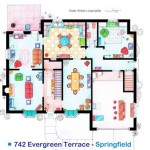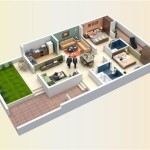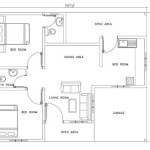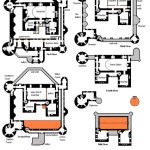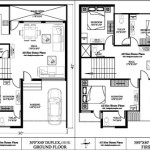Build a Bat House Plans
Bat houses, also known as bat shelters or bat boxes, provide a safe and secure haven for bats, offering them a place to roost and raise their young. While bats are often misunderstood and feared, they play a crucial role in maintaining healthy ecosystems. They are natural pest control agents, consuming vast numbers of insects, including mosquitoes, moths, and beetles. By providing bats with suitable habitat, you can encourage their presence in your area, contributing to a balanced and thriving environment.
Building a bat house is a rewarding project that can be enjoyed by people of all skill levels. With a few basic materials and some construction know-how, you can create a welcoming home for these valuable creatures. This article will guide you through the process of building a bat house, providing detailed plans and instructions.
Choosing the Right Location
The location of your bat house is critical to its success. Bats prefer specific conditions that ensure their safety and comfort. Consider the following factors when selecting a site:
- Sunlight: Bat houses should be positioned in a location that receives at least 6 hours of direct sunlight daily. Sunlight helps to warm the interior of the house and create a suitable microclimate for bats.
- Elevation: Bats prefer to roost in high places. Mount your bat house at least 10 feet above the ground, ideally on a building, tree, or pole. This elevates the house above potential predators like cats and raccoons and provides protection from flooding.
- Protection from the Elements: The bat house should be protected from harsh weather conditions such as rain and wind. Try to position it under an overhang or near a dense tree canopy to offer additional shelter.
- Access for Bats: Ensure that the entrance to the bat house faces away from prevailing winds and is accessible for bats to easily navigate.
- Proximity to Water: Bats require access to a water source. Locate your bat house near a pond, stream, or birdbath to provide them with convenient hydration.
Building Your Bat House
Once you've chosen the perfect spot, it's time to build your bat house. Here's a step-by-step guide:
- Materials: Gather the following materials:
- 1x6-inch rough-sawn pine boards (for the sides and back)
- 1x4-inch rough-sawn pine boards (for the top and bottom)
- 1/4-inch plywood or oriented strand board (OSB) (for the interior divider)
- Exterior-grade paint or stain (optional)
- Wood screws
- Weather stripping (optional)
- Cutting the Boards:
- Cut two 12-inch lengths of 1x6-inch boards for the sides of the bat house.
- Cut two 12-inch lengths of 1x4-inch boards for the top and bottom.
- Cut one 12-inch length of 1x6-inch board for the back of the bat house.
- Cut a 12-inch length of 1/4-inch plywood or OSB to create a divider inside the bat house.
- Assembling the Bat House:
- Screw the two side boards together to form the front of the bat house. Leave a gap at the bottom for the entrance.
- Attach the top and bottom boards to the sides, creating a rectangular frame.
- Attach the back board to the sides and top, completing the box.
- Attach the interior divider to the back board, dividing the bat house into two compartments. This creates roosting space for the bats.
- Finishing Touches:
- Paint or stain the bat house, if desired, using exterior-grade products. Avoid using bright colors, as bats prefer darker hues.
- Add weather stripping around the edges of the entrance to prevent drafts and water intrusion.
Maintaining Your Bat House
Once your bat house is installed, it's essential to maintain it properly to ensure its longevity and appeal to bats. Here are some important tips:
- Clean Regularly: Bats are clean animals, and a clean bat house is essential for their health. In the fall, after the bats have left for the winter, remove any debris or droppings from the interior of the house.
- Inspect for Damage: Examine the bat house regularly for any signs of damage, such as cracks, holes, or loose boards. Repair any damage immediately to prevent the house from becoming unsafe for bats.
- Check for Residents: Check the bat house periodically to see if bats have taken up residence. Look for bat droppings or the presence of bats flying in and out of the entrance.
- Avoid Disturbances: Once bats have moved into your bat house, avoid disturbing them. Keep the surrounding area quiet and avoid making unnecessary noise. Bats are sensitive to disturbances and may abandon their roost.
Building a bat house can be a rewarding experience, allowing you to contribute to a thriving ecosystem and provide a safe haven for these beneficial creatures. By following these plans and maintenance tips, you can provide bats with a comfortable and inviting home, welcoming them to your backyard and enhancing the natural balance of your surroundings.

Bat House Plans Bird Kits
:max_bytes(150000):strip_icc()/bat-house-plans-4775009-hero-13184dba82044431a028e3de6d2fd8f0.jpg?strip=all)
Free Bat House Plans You Can Build Today

How To Build A Bat House Lee Valley Tools

Build A Bat House Popular Woodworking

Bat Houses Mass Gov

How To Build A Bat House Modern Builds

Bathouse

Bat Houses

37 Free Diy Bat House Plans That Will Attract The Natural Pest Control And Save Their Lives

Build Your Own Bat House



